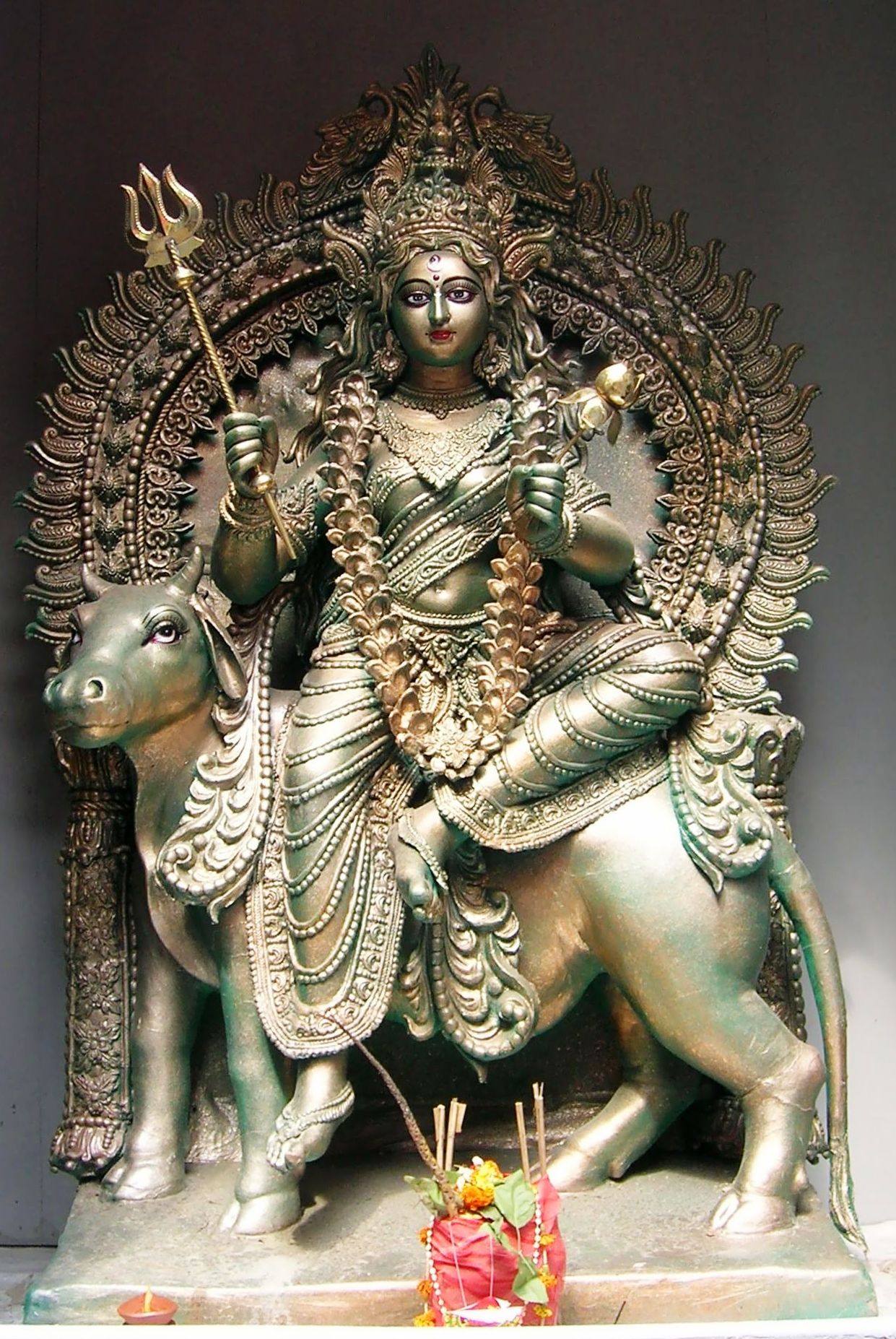Goddess Shailputri: First form of Maa Durga

Goddess Shailputri: First form of Maa Durga
Navratri celebrations revolve around the worship of the divine feminine or Shakti, who is considered to be the creative and nurturing energy of the universe. This festival celebrates the different forms of Goddess Durga, each of which represents a different aspect of her power. The first day of Navratri is dedicated to Goddess Shailputri, who is considered to be the first form of Goddess Durga.
Mythological origin of Goddess Shailputri
Birth of Shailputri:
The mythological stories associated with Goddess Shailputri are deeply rooted in Hindu scriptures, especially the Puranas. According to these sacred texts, Shailputri was born as the daughter of King Daksha and Queen Prasuti. She was initially named Sati, but later came to be known as Shailputri, a combination of two words - "Shail" (mountain) and "Putri" (daughter). She was named Shailaputri because she was believed to be born in the Himalayas, the most powerful mountain in the world.
Marriage with Lord Shiva:
In her early life, Sati was highly devoted to Lord Shiva and wanted to marry him. She performed rigorous penance to win his heart and succeeded. She became the wife of Lord Shiva and was known as Parvati. This mythological story symbolizes the union of Shakti (feminine energy) with Shiva (masculine energy), emphasizing the balance and harmony of the cosmic order.
Image ofGoddess Shailputri•
physical attributes:
Goddess Shailaputri is often depicted as a beautiful young woman riding on a bull, known as Nandi. She has a trident in one hand and a lotus flower in the other hand, while the third hand is raised in a posture of protection and fearlessness. Her attire is simple and divine, symbolizing purity and simplicity.•
Symbolism of the Bull:
The bull, Nandi, is a symbol of strength and determination. Nandi is not only the divine vehicle of Lord Shiva but also represents the unwavering devotion and loyalty of the devotees. The association of Goddess Shailaputri with Nandi underlines her role as a source of strength, resilience and unwavering commitment for her devotees.
Trident and lotus flower:
The trident in Shailputri's hand is a symbol of her power and authority. It represents the past, present and future, emphasizing the cyclical nature of existence. On the other hand, the lotus flower symbolizes purity and wisdom. Shailaputri's dual possession of the trident and the lotus highlights the duality and balance of her energies – destructive and nurturing, fierce and compassionate.
Spiritual significance of Goddess Shailputri
Source of divine power:
Goddess Shailputri is worshiped as the source of divine power, which is necessary to embark on a spiritual journey. In Hinduism, it is believed that before one can attain spiritual enlightenment, one must first conquer the demons within oneself and develop the strength to withstand the challenges and temptations of the material world. The worship of Shailputri during Navratri reminds of this inner strength that devotees should develop.
Goddess of balance:
The statue of Shailputri with the trident and lotus symbolizes the importance of balance in life. The trident represents the ability to face and overcome challenges, while the lotus symbolizes purity and wisdom that can be achieved through a balanced and focused life. Her form encourages devotees to establish harmony in their material and spiritual activities.
Security and fearlessness:
The raised hand of Goddess Shailputri, a symbol of protection and fearlessness, assures her devotees that she is their protector and will protect them from harm and fear. This aspect of her personality brings solace and courage to those who seek his blessings, knowing that they are under her divine protection.
Goddess ShailputriNavratri Rituals:
The worship of Goddess Shailputri during Navratri follows a set set of rituals which vary from region to region in India. Devotees observe fast and engage in prayers and meditation to seek the blessings of the Goddess for strength and courage.
Offerings and Prayers:
Devotees offer various things including flowers, fruits and sweets to Goddess Shailputri. Traditional hymns and devotional songs are sung in his honour, praising his attributes and seeking his blessings. Many people perform aarti (a formal offering of light) as an expression of their devotion and reverence.
Fasting:
Fasting is a common practice during Navratri, especially as the first day is dedicated to Goddess Shailputri. It is believed that by abstaining from certain foods, individuals can purify their body and mind, making them more receptive to the blessings of the Goddess.
Importance of internal cleanliness:The rituals and fasts associated with the worship of Shailputri not only purify the body but also symbolize the purification of the soul. It is believed that this inner purification prepares the devotees for the spiritual journey ahead and enables them to face their inner weaknesses and fears.
Cultural and social impact of Goddess Shailputri
Empowerment of women:The worship of Goddess Shailputri plays an important role in the empowerment of women in the Hindu society. Her portrayal as a strong, independent and fearless deity serves as a source of inspiration for women, encouraging them to embrace their inner strength and pursue their goals with determination.
Symbol of facing challenges:
In a world full of challenges and adversities, Shailputri's story of unwavering devotion and determination resonates with people from all walks of life. His character serves as a symbol of resilience, reminding individuals to persevere in the face of adversity and never lose hope.
We can chant these mantras for Goddess Shailputri.
Om Ain Hreem Kleem Chamundayai Vicche Om Shailputri Devyai Namah.• -Vande Vanchitlabhay Chandrardhakritshekharam.Vrisharudham Shuldharam Shailputri Yashasvinim.• -Ya Devi Sarvabhuteshu Maa Shailputri Rupan Sansthita.Namastesyaye Namastesyaye Namastesyaye Namo Namah.
It is considered auspicious to offer food made from cow's ghee and milk to Mother Shailputri on the first day of Navratri. Religious people say that Mother Durga is pleased by doing this.



